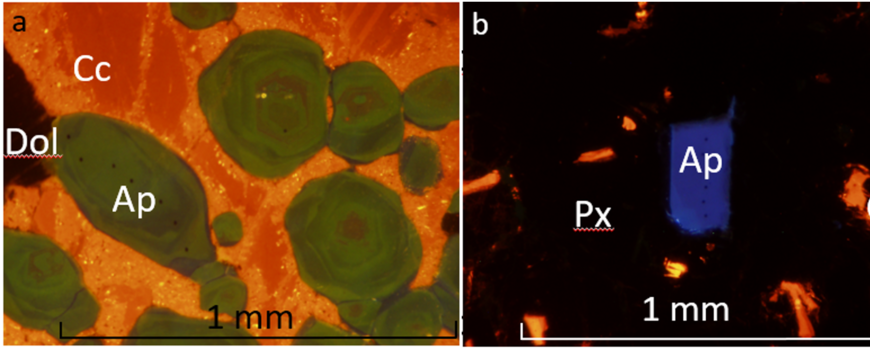Rare-metal enrichment in carbonatite-bearing magmatic systems: Part A. Understanding magmatic evolution and enrichment processes in time by high-precision dating and inclusion studies
Despite intensive investigations of carbonatites and related rocks (ultrabasic, basic, alkaline) using multiple geoscience methods and disciplines, their genesis and evolution remain quite elusive. Furthermore, there is still no consensus what are the critical prerequisites and processes leading to the mobilization and enrichment of metals and formation of ore deposits. Here we propose a study which combines petrological, geochemical, geochronological as well as experimental analyses to better understand the earliest metal enrichment processes in carbonatite-bearing magmatic rocks (using ultrabasic-basic rocks of several ultrabasic alkaline carbonatite complexes (UACC´s). The main focus will be on searching the link between composition of primary magmatic liquids and their evolution in time. This will be achieved on the example of the UACC´s from the Kola Alkaline Province representing a classical and well-exposed case of carbonatites and related deposits. In particular, we will try to find the answers on the following questions:
1) The evolution in time, i) within the KAP (can be a track of a plume constructed from high-precision ages?), and ii) within selected UACC (can we resolve an age difference between earliest and late melts?). We will apply geochronology to the earliest rocks (e.g. pyroxenites) by high-precision perovskite dating, and to late-stage melts (carbonatites/phoscorites) by high-precision dating of baddeleyite and zircon.
2) What were the conjugate melts of earliest rocks that represent cumulates? The study of melt inclusions of early formed minerals (perovskite, olivine, pyroxene) of olivinites, pyroxenites, amphibolites will provide information of the chemical composition of these melts and their fluid composition. What were the conditions of these melts (P, T, X, fO2)?
3) The geochemical evolution of rocks and their minerals: What minerals (and their distinct generations) concentrate REE, Nb and other potential ore metals? What role play early cumulates for fractionation and enrichment processes? We will apply cathodoluminescence of thin sections to distinguish and characterize different mineral generations (e.g. Fig. 1), mineral geochemistry (by LA-ICP-MS), and determine the isotope composition (Sr, Nd, Pb) with high precision for selected minerals (e.g. carbonate, apatite, perovskite).
The earliest rocks (olivinites, pyroxenites) often contain perovskite and are typically interpreted as cumulates. The study of melt inclusions of minerals from these rocks will provide the composition of conjugate melts. With this information obtained perovskite ages will be reliably assigned to the formation time of these early melts. Geochemical studies of minerals from dated early- (olivinites, pyroxenites, amphibolites) and late-stage rocks (phoscorites, carbonatites), on the other hand, will elucidate the role of mineral fractionation, melt mixing and immiscibility for element enrichment up to ore levels in the established time interval.

